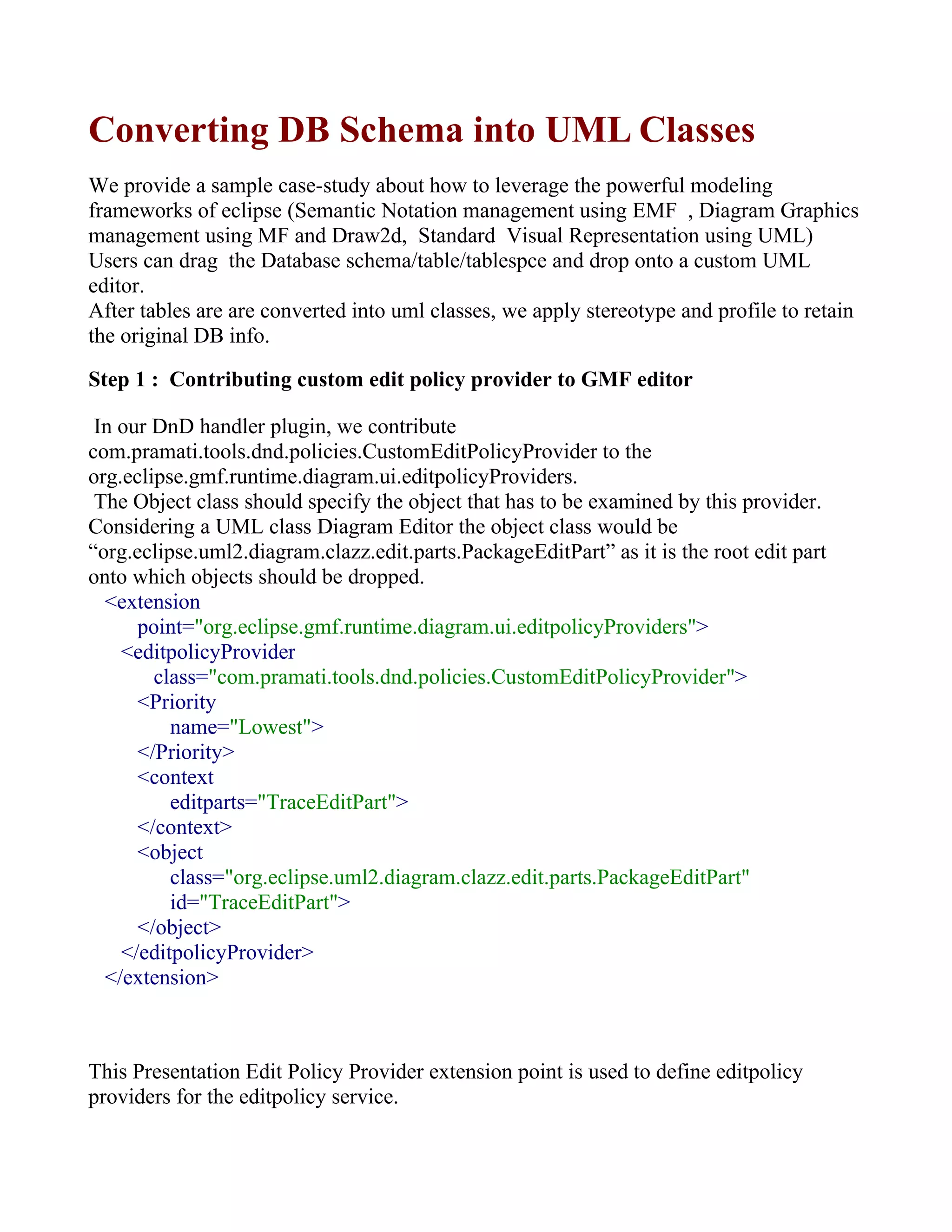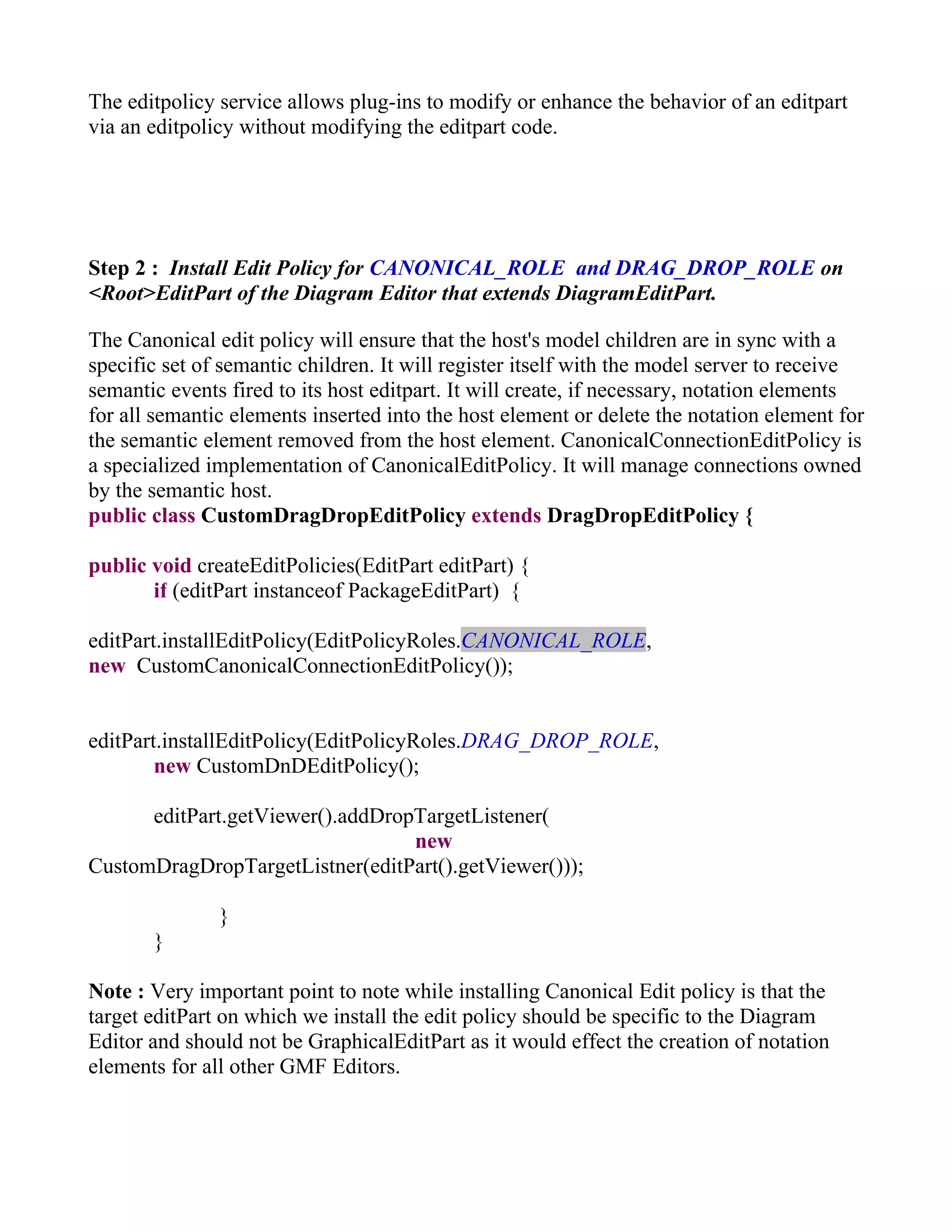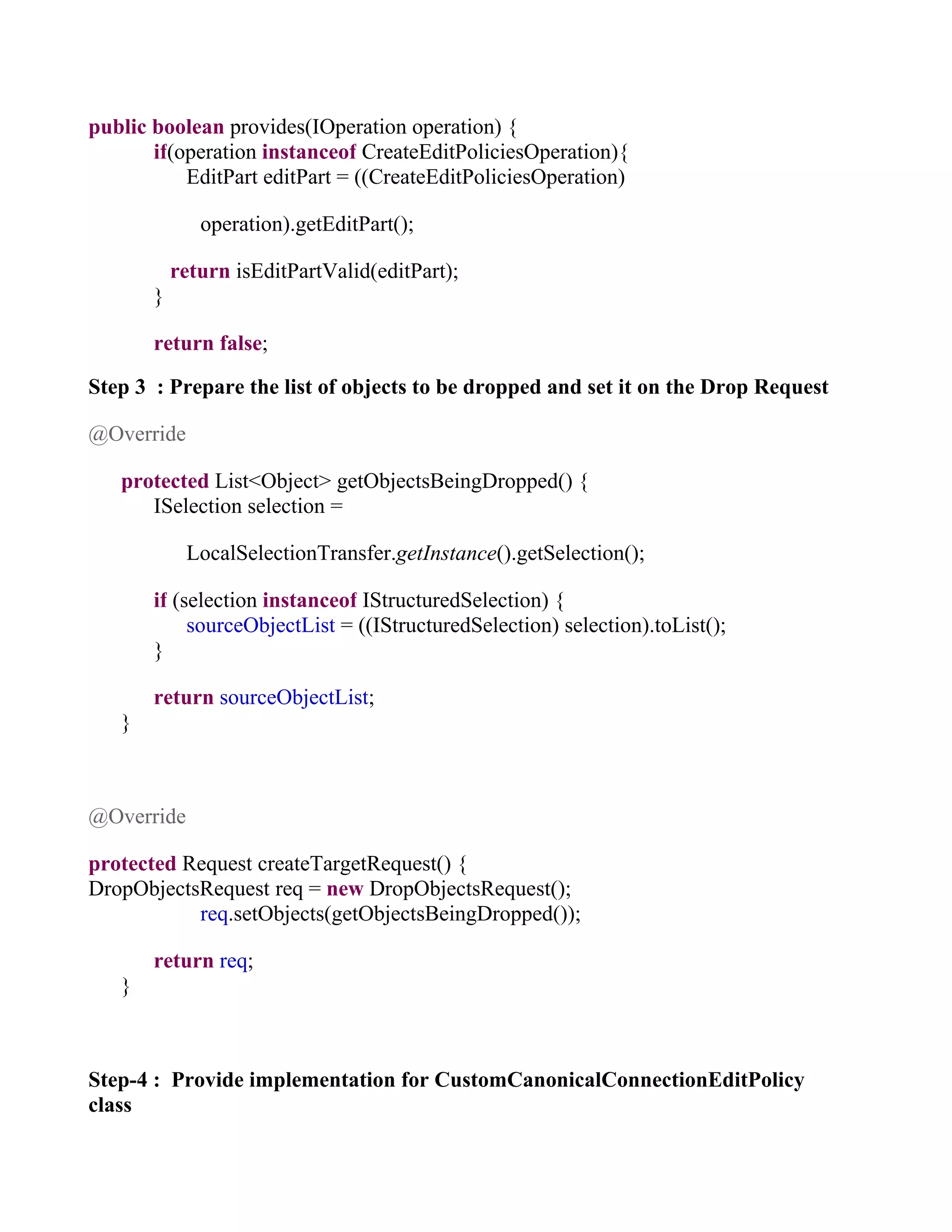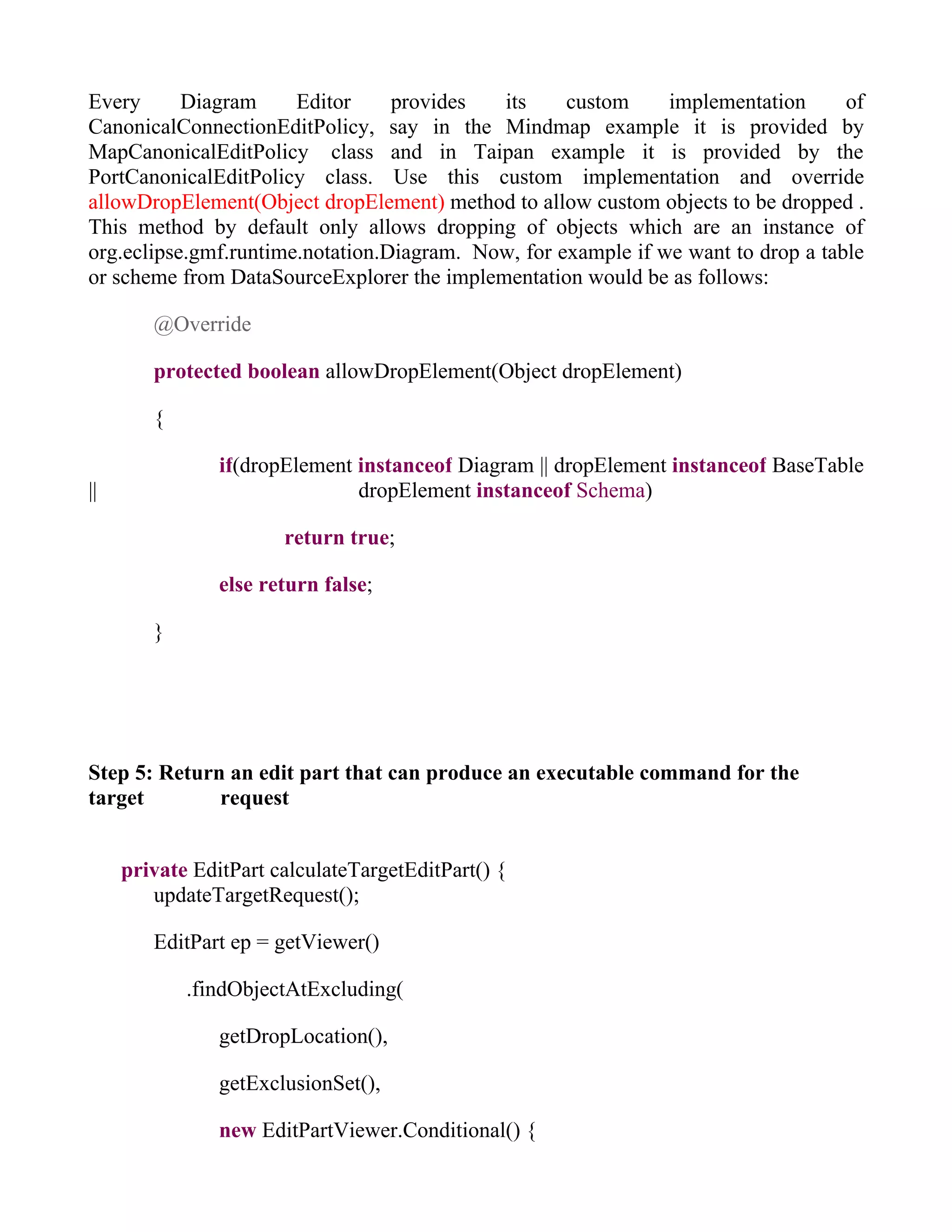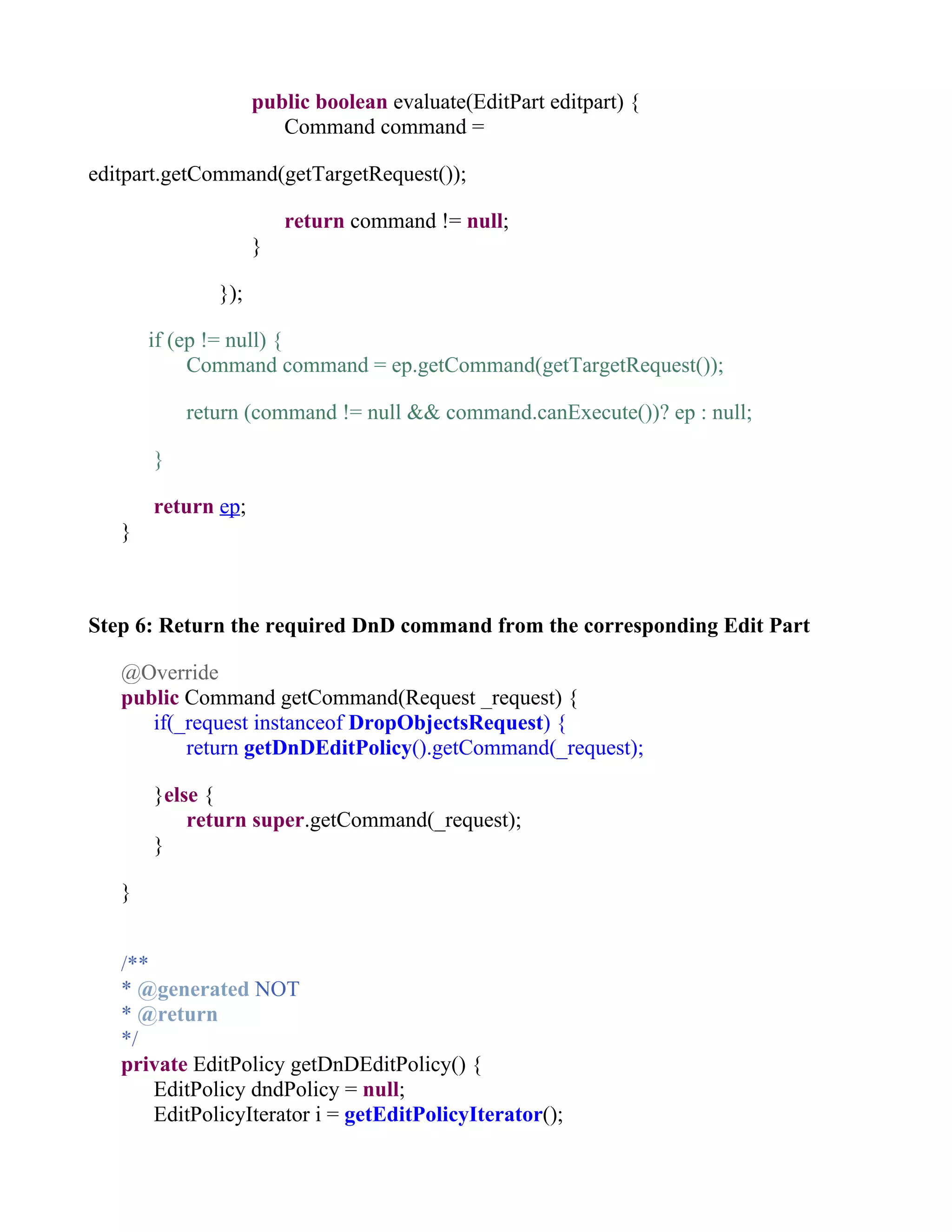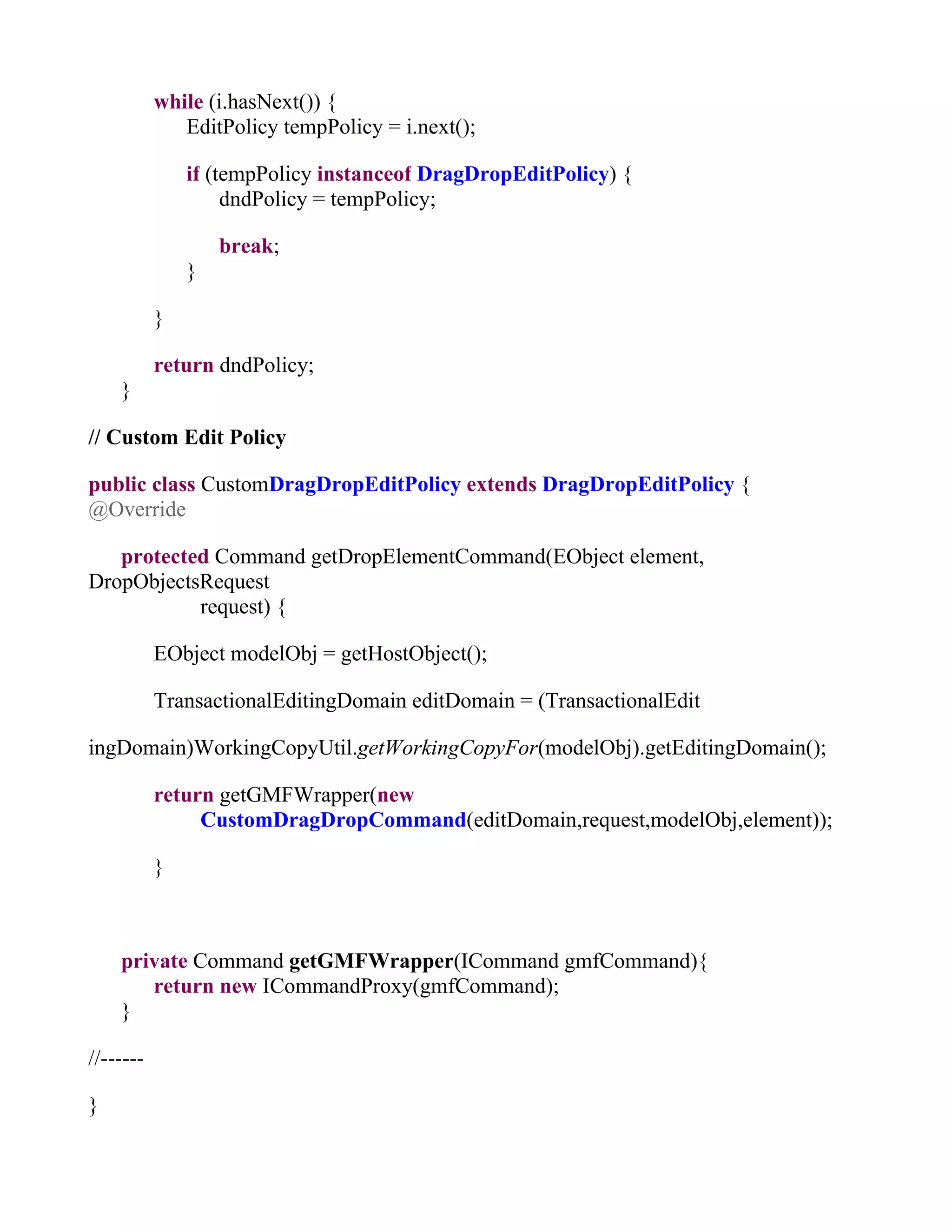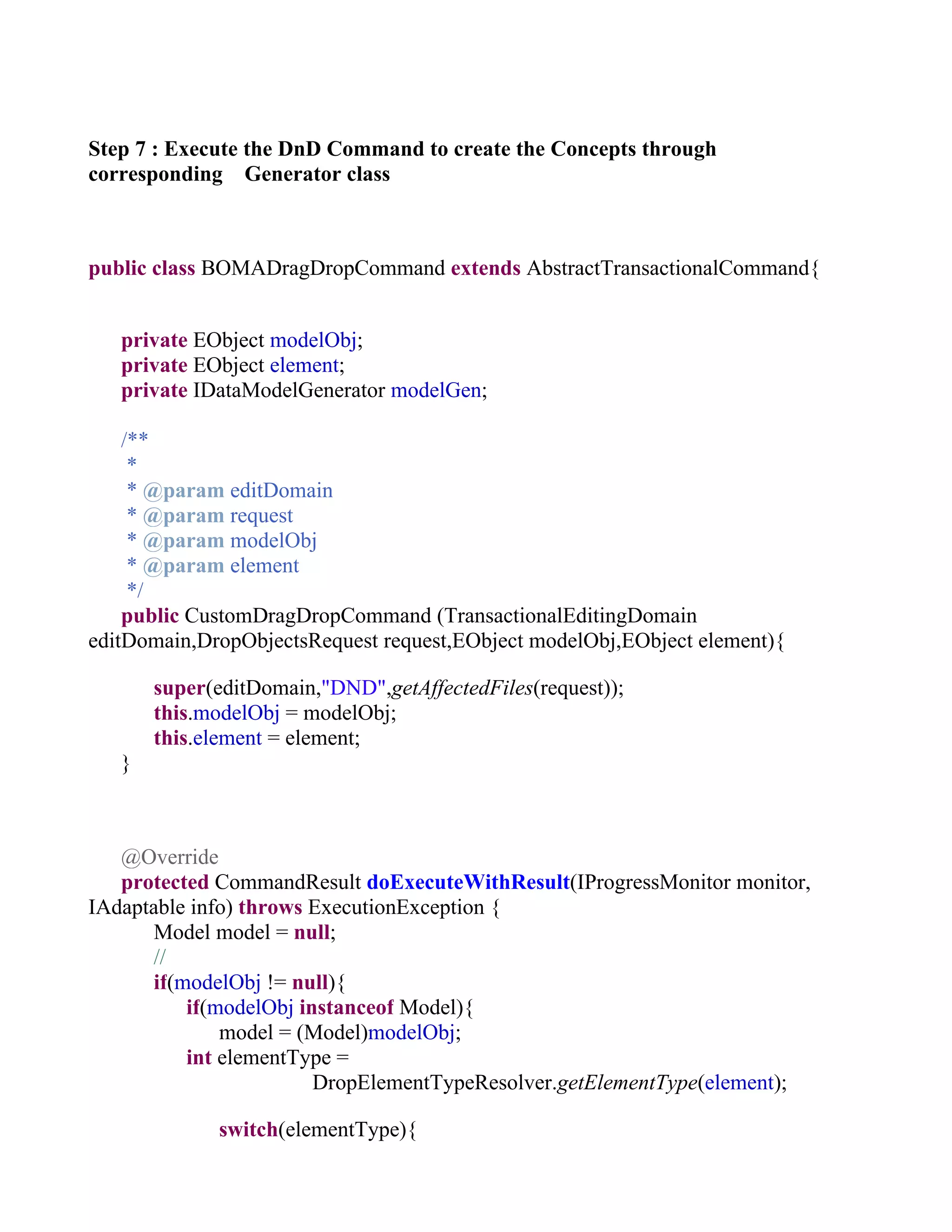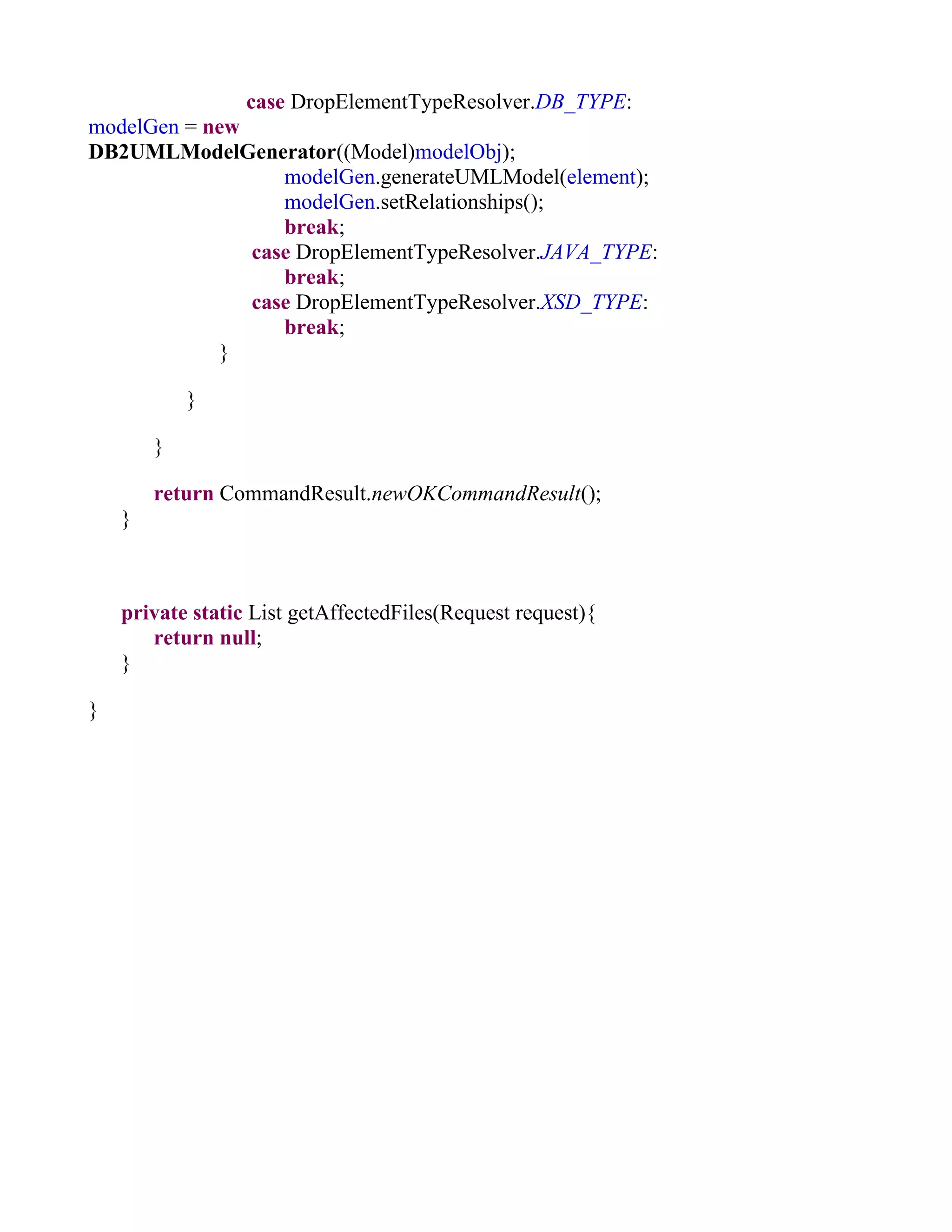This document describes the steps to convert a database schema into UML classes by dragging database tables and dropping them onto a custom UML editor. The key steps are:
1. Contribute a custom edit policy provider to the GMF editor
2. Install canonical and drag-drop edit policies on the diagram root edit part
3. Prepare a list of objects being dragged and set on the drop request
4. Allow dropped objects in the canonical edit policy
5. Calculate and return the target edit part from the drop location
6. Return the required drag-drop command from the target edit part
7. Execute the drag-drop command to generate UML classes
